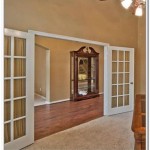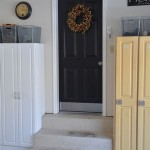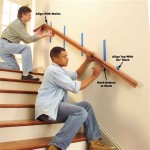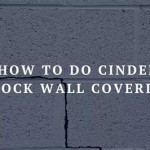Essential Aspects of Soundproofing Interior Walls
Unwanted noise can be a significant annoyance, negatively impacting your comfort and well-being. Soundproofing interior walls is a practical solution to mitigate noise transmission within your home or office, creating a more peaceful and serene environment.
Soundproofing interior walls involves implementing a combination of materials and techniques to absorb, block, or deflect sound waves. Here are some essential aspects to consider:
1. Mass and Density
The mass and density of materials play a crucial role in soundproofing. Heavier materials, such as drywall, concrete, or mass-loaded vinyl (MLV), are more effective at blocking sound waves due to their high density.
2. Sound Absorption
Sound-absorbing materials, like acoustic panels, fiberglass insulation, or carpets, help dissipate sound energy. They convert sound waves into heat, reducing the amount of noise transmitted through the wall.
3. Damping
Damping materials, such as Green Glue or viscoelastic compounds, are applied between layers of drywall or other materials to reduce vibrations and dissipate sound energy.
4. Decoupling
Decoupling involves creating a physical separation between the wall and the studs or framing. This can be achieved using resilient channels, sound clips, or isolation clips. Decoupling reduces sound transmission by preventing vibrations from traveling through the structure.
5. Sealing Gaps and Holes
Even small gaps or holes can compromise soundproofing efforts. Ensure that all gaps and holes around pipes, electrical outlets, and the baseboard are properly sealed using acoustic caulk or foam.
6. Multiple Layers
Using multiple layers of different materials, each with different soundproofing properties, provides a more effective barrier against noise. For example, a combination of drywall, MLV, and sound-absorbing insulation can significantly reduce sound transmission.
7. Curtains and Upholstery
While not directly related to wall soundproofing, curtains and upholstered furniture can help absorb and deflect sound waves within a room. Heavy curtains and plush fabrics can contribute to a quieter atmosphere.
Additional Tips
In addition to these essential aspects, consider the following tips to enhance your soundproofing efforts:
*By implementing these soundproofing techniques, you can effectively reduce noise transmission through interior walls, creating a more tranquil and comfortable environment in your home or office.

Wall Soundproofing How To Soundproof Your Netwell

How To Soundproof A Wall Materials For Soundproofing Walls

Wall Soundproofing How To Soundproof Your Netwell

How To Soundproof A Stud Wall Simple Guide

Soundproofing How To Soundproof A Room Diy Project The Family Handyman

How To Soundproof A Wall Achieve Higher Stcs On Your Demising

How To Soundproof A Stud Wall Noisestop Soundproofing Guide
Is Soundproof Insulation Worth The Cost

What Are The Four Elements Of Soundproofing

Wall Soundproofing How To Soundproof Your Netwell
Related Posts








